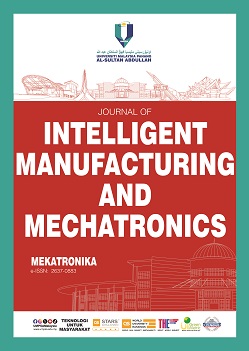Exploring Micro Aerial Vehicle Mechanism and Controller Design Using Webots Simulation
DOI:
https://doi.org/10.15282/mekatronika.v5i2.9824Keywords:
Micro Aerial Vehicle, Engineering Education, Controller design, Webots, SimulatorAbstract
Quadrotor Micro Aerial Vehicle (MAV) is one of the Unmanned Aerial Vehicle (UAV) which very versatile with their capabilities for specific purposes. Understanding and controlling MAV is important for various applications, from surveillance and delivery services to disaster response and entertainment. In engineering education, providing a hardware platform for understanding MAV mechanism and the controller design is very challenging in terms of cost and safety issue. This paper presents a study on drone mechanisms and controller design using Webots, a versatile robot simulation environment. The primary objectives of this research were to simulate and analyze the behavior of drones in a line following task, employing PID controller as the control strategies, and to evaluate the suitability of Webots as a simulation tool for drone-related teaching and learning as well as research. In the methodology section, the setup of the Webots-based drone simulation, including the selection of a suitable drone model, sensor configurations, and the implementation of control algorithms will be explained. Line following task will be focused to analyze the drone mechanism and the controller design. Data on the drone performance will be collected through the experiment and will be analyzed rigorously. The findings reveal the effectiveness of Webots as a platform for simulating drone behavior. The advantages of using simulation tools like Webots, including cost-effectiveness, safety, and the ability to test and refine control algorithms before deployment on physical drones was proved in this study. It is shown that Webots can be leveraged to teach and train individuals in drone technology without the need for physical hardware.
Downloads
Published
Issue
Section
License
Copyright (c) 2023 Universiti Malaysia Pahang Publishing

This work is licensed under a Creative Commons Attribution-NonCommercial 4.0 International License.




